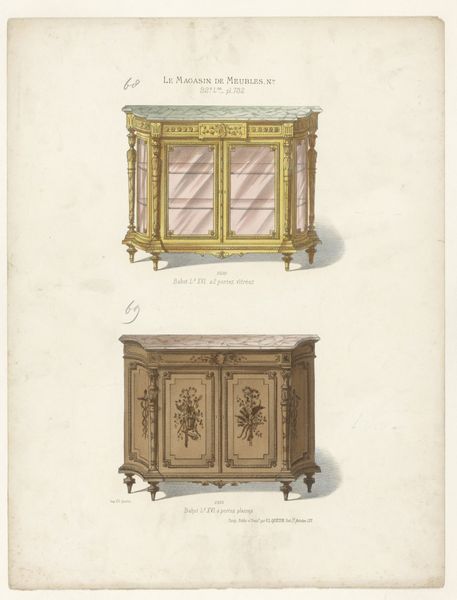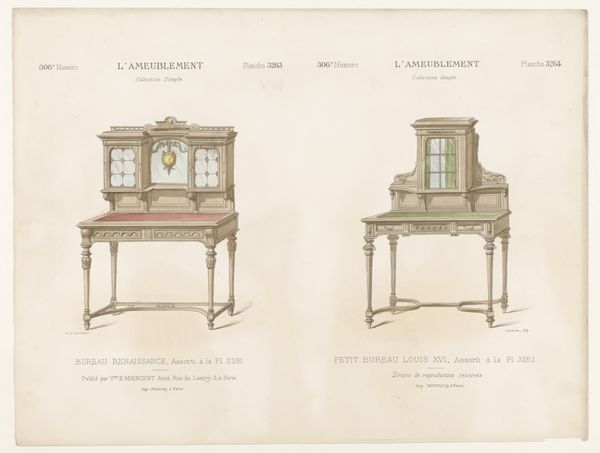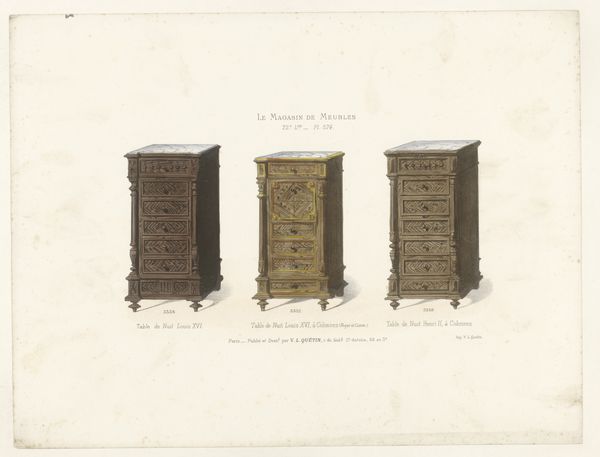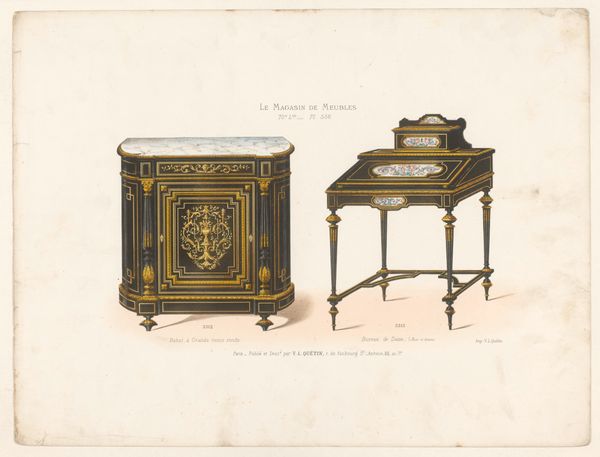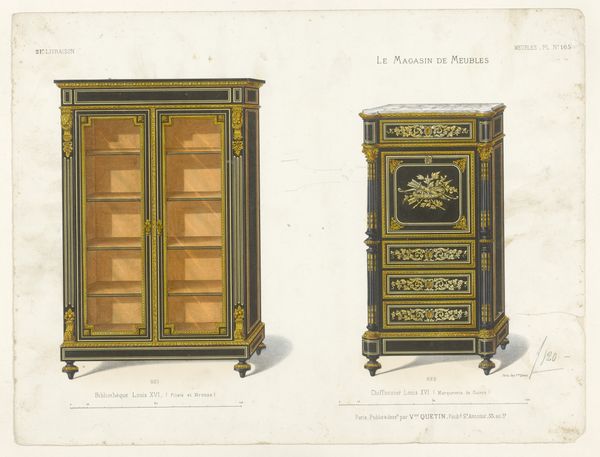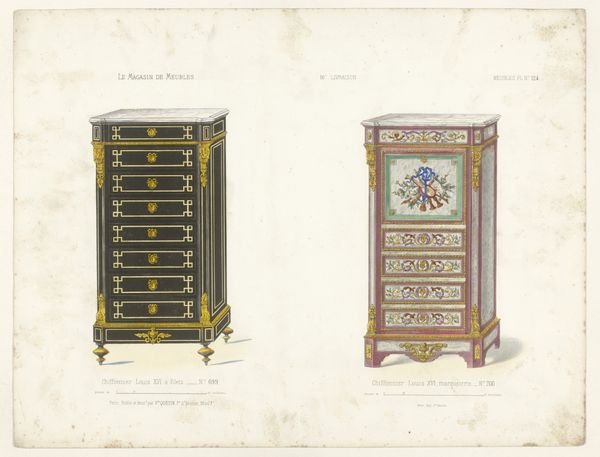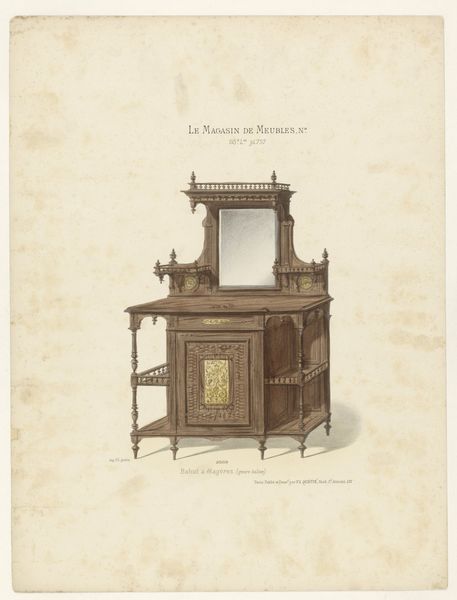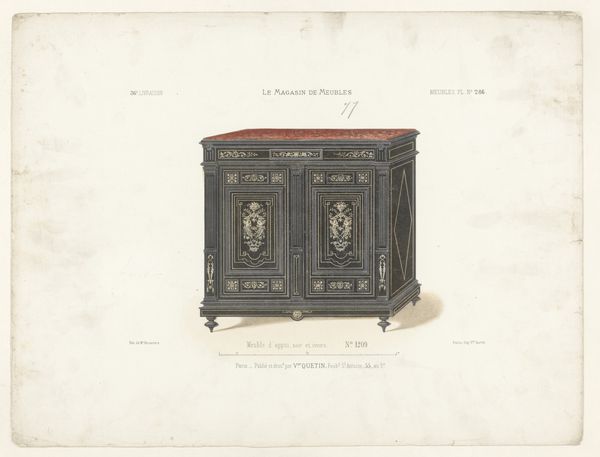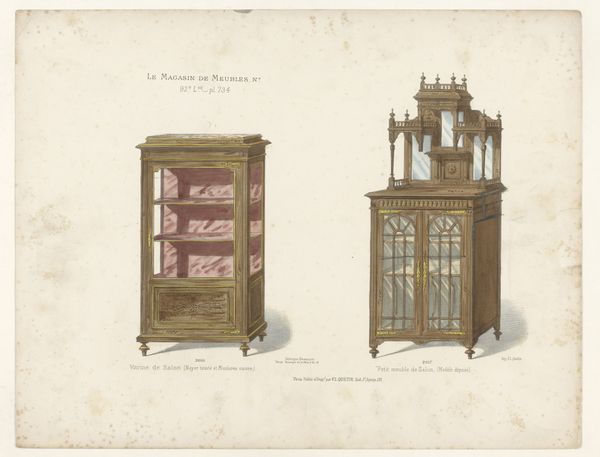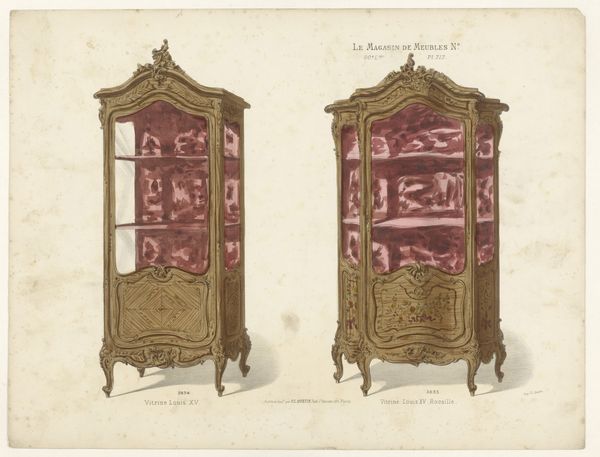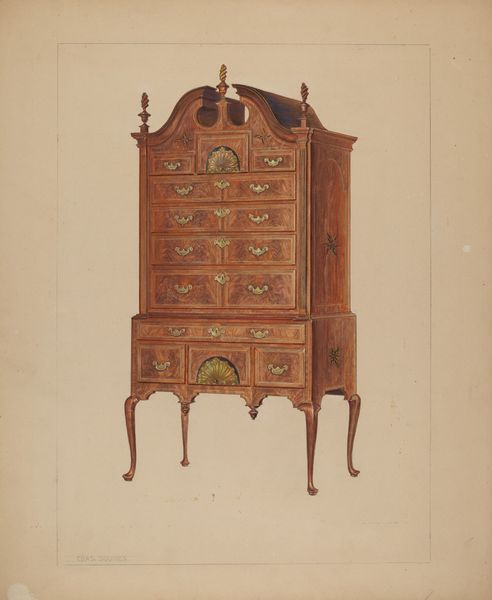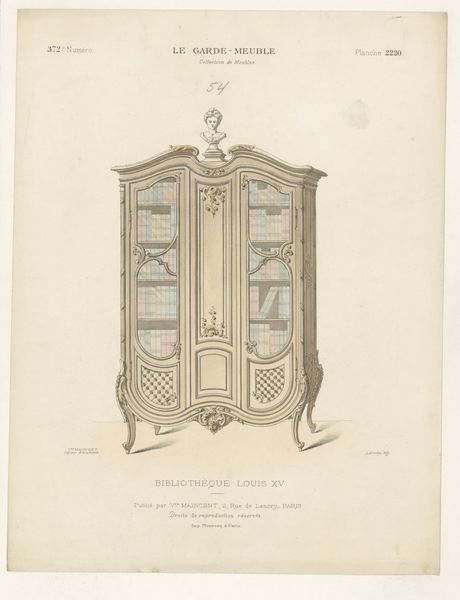
drawing, graphic-art, print, poster
#
drawing
#
graphic-art
# print
#
old engraving style
#
academic-art
#
decorative-art
#
poster
Dimensions: height 276 mm, width 359 mm
Copyright: Rijks Museum: Open Domain
Curator: This print, known as "Twee ladekasten," or "Two Chests of Drawers" in English, dates from after 1878. It presents a decorative study of two different drawer designs. Editor: The colour palette is instantly striking—the muted greens contrasted with the warm wood tones give off a certain domestic and somewhat sterile mood, fitting of industrial-era organizational strategies, maybe for home or business. Curator: It is compelling to think about what those pieces might mean within the context of design history at that time, when ideas around utility and social status were very contested in many levels of society. Consider the impact of these designs on the emerging middle class. Editor: Precisely. These are more than just furniture designs; they’re artifacts reflecting a rising bureaucratic consciousness and a hunger for a more structured society. Take note of the symmetry. Do these forms suggest more than utility to you? Curator: Indeed! The handles and decorations evoke a symbolic hierarchy. Looking closely, the floral and other geometrical motifs subtly reinforce traditional notions of gender roles, like femininity intertwined within home ownership for example. Editor: The sheer repetition in the chest of drawers hints at psychological compulsions with a ritual of order. And how can it not bring to mind ideas of Victorian repression. The green strikes me as quite an unfulfilled shade. Curator: I am also interested in the politics behind the publication of these designs and its reception among different social demographics, considering that academic art standards had already spread widely across Europe and the rest of the world. How did a seemingly functional drawing intersect with aspirations of societal structure for various readers? Editor: A lot is concealed from its utility at first glance; this object is, therefore, something that also reveals many truths about European societal ideals at this historical turning point. A treasure trove, of symbols really. Curator: Precisely, examining artworks within social contexts enriches our understanding. Editor: It gives greater depth, showing how functional forms embody societal meanings.
Comments
No comments
Be the first to comment and join the conversation on the ultimate creative platform.
